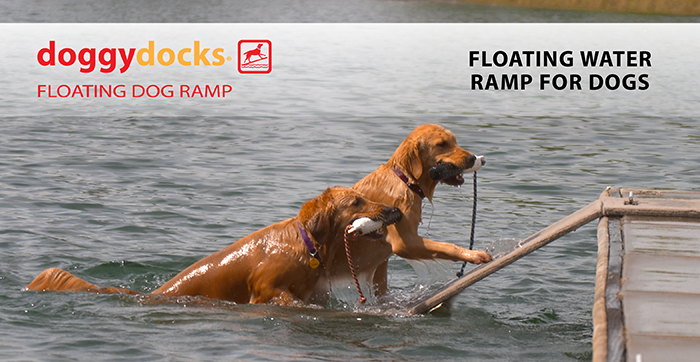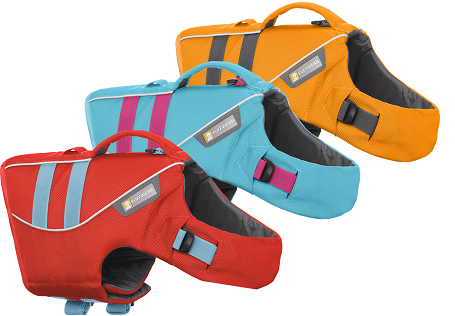A well-designed life jacket does more than add floatation—it helps your dog maintain a natural swimming posture while providing crucial safety features. Whether your pup is a seasoned swimmer or just starting out, the right life vest can make all the difference in their water confidence and safety.
From adjustable straps to high-visibility colors, we'll guide you through the essential features to look for, proper sizing techniques, material comparisons, and must-have accessories to complement your dog's water safety gear.
Key Features to Look For
Not all dog life jackets are created equal. These essential features will ensure your pup stays safe and comfortable in the water:
Essential Life Jacket Features:
- Snug, adjustable straps around the neck, chest, and belly to prevent riding up
- Buoyant panels placed under the chest and along the back for balanced lift
- Reflective trim and bright colors to improve visibility in choppy or low-light conditions
- A sturdy handle on top for easy grab-and-lift rescues
- Durable stitching with reinforced stress points
- Quick-release buckles for emergency removal
Look for jackets with multiple adjustment points to ensure a secure fit that won't chafe or restrict movement. The handle should be strong enough to support your dog's full weight in case you need to lift them from the water.
Proper Sizing Guide
Sizing your dog correctly is critical for both safety and comfort. A poorly fitting life jacket can be dangerous—too loose and it may slip off, too tight and it could restrict breathing or movement.
1. Neck Circumference
Measure around the base of the neck where the collar normally sits. Leave room for two fingers to fit comfortably between the tape and your dog's neck.
2. Chest Girth
Measure around the widest part of the chest, just behind the front legs. This is typically where the life jacket's main strap will sit.
3. Body Length
Measure from the base of the neck (where the collar sits) to the tail root along your dog's spine.
4. Weight Consideration
Check the manufacturer's weight recommendations as buoyancy needs vary by size. Heavier dogs need more floatation.
Life jackets typically come in sizes like Small, Medium, Large, and X-Large. Make sure the vest isn’t too loose or so tight it restricts movement. Your dog should be able to pant and move freely.
Material Comparison
Life jacket materials affect comfort, durability, and performance. Here's how common options compare:
| Material | Best For | Maintenance |
|---|---|---|
| Neoprene | Cold water, provides warmth and flexibility | Rinse after saltwater use, air dry |
| Mesh-backed foam | Hot climates, breathable and lightweight | Easy to clean, dries quickly |
| Ripstop nylon | Durability, resists snags and tears | Wipe clean, avoid harsh detergents |
| Polyester blends | All-purpose, often most affordable | Machine wash gentle cycle |
Consider your typical water environment when choosing materials. Saltwater and rough conditions demand more durable fabrics, while pool use allows for lighter options.
Essential Safety Accessories
Complement your dog's life jacket with these additional safety items for complete water protection:
Floating Retrieval Toys
Bright, buoyant toys give your dog a reference point and encourage them to swim toward you rather than drifting off course.
Waterproof ID Tags & GPS Trackers
If your dog wanders or slips their leash, a GPS collar or waterproof tag speeds up any reunion by keeping contact information readable.
LED Collar Lights
For dawn or dusk swims, battery-powered LEDs make your dog stand out against dark water, making tracking effortless.
Quick-Release Harness Clips
In an emergency, you'll appreciate hardware that lets you remove gear fast without fumbling with stubborn buckles.
Equipping your dog properly is the first line of defense against water-related risks. With the right combination of buoyancy, visibility, and identification tools, every swim can be a confident, carefree experience—no matter where you splash.
Teach and Utilize Safe Entry and Exit Points
Even the best swimmer can find themselves stranded at the water's edge if they cannot get in or out easily. Teaching your dog reliable entry and exit techniques, and providing the right infrastructure, transforms every splash into a stress-free experience.
Training Your Dog to Use Ramps
Introducing your dog to docks, pool steps, or fixed ramps takes patience—and tasty incentives:
- Begin on dry land - Place treats or a favorite toy at the bottom and top of the ramp or steps. Let your dog explore at his or her own pace, rewarding curiosity.
- Add partial water exposure - Move so the bottom step or ramp edge sits in shallow water. Use calm, encouraging tones: "Up!" as they move forward, "Step!" as they reach each level.
- Reinforce progress - After just one successful ascent or descent, offer enthusiastic praise and a small treat. Keep sessions short—five minutes of practice, then a fun reward on dry ground.
- Repeat regularly - A quick drill before every outing builds muscle memory. Gradually reduce treats as your dog masters positioning and balance.
Watch our doggydocks® Training Video
Spotlight on doggydocks® Floating Ramp System
When your goal is seamless dock-to-water access, nothing beats the handcrafted precision of doggydocks®. This patented floating ramp mimics a gentle shoreline, giving pups a natural feeling under their paws.
Key Features:
- Ergonomic design: Supports joints, muscles, and spine with gradual incline
- Customizable flotation: SnapBag™ system adjusts buoyancy for different water levels
- Marine-grade materials: Durable against sun, salt, and surf
- Universal compatibility: Works with boats, docks, pools and yacht platforms

Beyond safety, doggydocks® turns entry and exit into a game—your dog will learn the ramp faster because it feels natural and fun.
5. Monitor Water Conditions and Potential Hazards
Before you let Fido cannonball in, a quick environmental check can save many headaches. Changing weather, shifting currents, and unseen debris all pose real threats to dogs in and around water. You don't need specialized gear or a marine-science degree—just a few simple steps to evaluate whether today's swim spot is dog-ready.
- Check tide charts for coastal areas
- Review river flow reports for freshwater
- Monitor weather forecasts for temperature swings
- Scan for storm warnings
Identifying Hazards
Strong Currents
Look for streaks of foam or swirling eddies that indicate fast-moving water. If it's hard to walk against the flow, it's unsafe for your dog.
Cold Temperatures
Water below 70°F can sap energy quickly. Limit swim time in cold conditions, especially for small or short-haired breeds.
Algal Blooms
Blue-green algae appears as foul, paint-like streaks. The pungent odor is another red flag—steer clear as it can be deadly.
Combine local resource data with your own observations to decide if conditions are safe or if you should find a calmer stretch of water.
